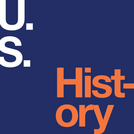
The lesson discusses the passive voice. This lesson is 2 of 2 in the series titled "Emphasis: Using the Passive Voice." [3:53]
- Subject:
- Arts
- English Language Arts
- Material Type:
- Audio/Video
- Provider:
- Sophia Learning
- Date Added:
- 12/01/2023

The lesson discusses the passive voice. This lesson is 2 of 2 in the series titled "Emphasis: Using the Passive Voice." [3:53]

This site shows how to repair run-on sentences. Students and teachers will find this interactive resource helpful.

This tutorial teaches writing students how to share convincing in well-written sentences that are connected from one to the other--that is, they exhibit transition. W.9-10.1c cohesion/clarity/reason, W.9-10.2c cohesion/clarity/trans

Students' eyes are opened to the value of creative, expressive and succinct visual presentation of data, findings and concepts. Student pairs design, redesign and perform simple experiments to test the differences in thermal conductivity (heat flow) through different media (foil and thin steel). Then students create visual diagrams of their findings that can be understood by anyone with little background on the subject, applying their newly learned art vocabulary and concepts to clearly communicate their results. The principles of visual design include contrast, alignment, repetition and proximity; the elements of visual design include an awareness of the use of lines, color, texture, shape, size, value and space. If students already have data available from other experiments, have them jump right into the diagram creation and critique portions of the activity.

This helpful resource details the process of writing, including how to plan, write, and revise. Content also includes the different types or genres of writing, and exercises in grammar and mechanics.

Choosing how to present your talk is an important aspect of preparing for public speaking. Use these tips to decide the most effective method.

U.S. History is designed to meet the scope and sequence requirements of most introductory courses. The text provides a balanced approach to U.S. history, considering the people, events, and ideas that have shaped the United States from both the top down (politics, economics, diplomacy) and bottom up (eyewitness accounts, lived experience). U.S. History covers key forces that form the American experience, with particular attention to issues of race, class, and gender.Senior Contributing AuthorsP. Scott Corbett, Ventura CollegeVolker Janssen, California State University, FullertonJohn M. Lund, Keene State CollegeTodd Pfannestiel, Clarion UniversityPaul Vickery, Oral Roberts UniversitySylvie Waskiewicz


By the end of this section, you will be able to:
Identify the main Spanish American colonial settlements of the 1500s and 1600s
Discuss economic, political, and demographic similarities and differences between the Spanish colonies


By the end of this section, you will be able to:
Describe President Dwight D. Eisenhower’s domestic and foreign policies
Discuss gender roles in the 1950s
Discuss the growth of the suburbs and the effect of suburbanization on American society

Students learn the value of writing and art in science and engineering. They acquire vocabulary that is appropriate for explaining visual art and learn about visual design principles (contrast, alignment, repetition and proximity) and elements (lines, color, texture, shape, size, value and space) that are helpful when making visual aids. A PowerPoint(TM) presentation heightens students' awareness of the connection between art and engineering in order to improve the presentation of results, findings, concepts, information and prototype designs. Students also learn about the science and engineering research funding process that relies on effective proposal presentations, as well as some thermal conductivity / heat flow basics including the real-world example of a heat sink which prepares them for the associated activity in which they focus on creating diagrams to communicate their own collected experimental data.